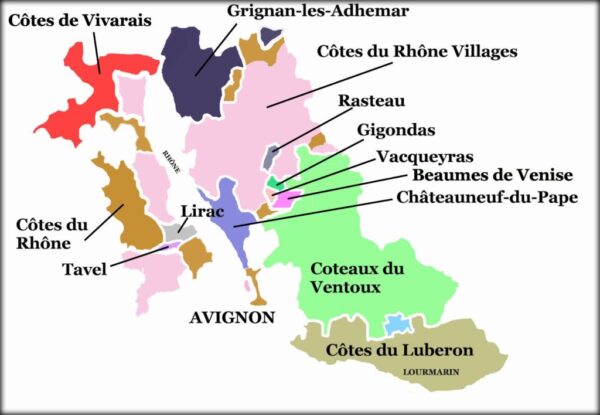
Today, most wine education takes the form of a guided tour of what we might call the Appellation Trail. Since appellations constitute the fundamental categories nation states use to organize and police the wine produced within their borders, familiarity with them would seem to be important to developing a comprehensive view of the wine world and making one conversant with its vocabulary. So what exactly is an appellation, anyway?
Here’s the definition I prefer: An appellation is a set of instructions for making a particular wine in a particular way with a view to a achieving a particular style. Of prime importance to winemakers who opt into the system is their right to use the community trademarks associated with it. They may, for example, label their conforming wine Côtes du Rhône or Brunello di Montalcino — names known to consumers and suggestive of a certain experience. To use one of these trademarks on the label of a wine that does not conform to its standards is the essence of wine fraud.
Since these instructions have the force of law and are pretty strictly enforced (for an idea of what these instructions consist of, and the detail they descend to, look here) it’s clear that appellations were never intended to be theaters of creativity. Like Richard Dawkins’ selfish genes, their sole goal is perpetual replication — in this case, of a style of wine which has been arrived at by consensus. The idea is for consumers to feel a certain confidence that wine with an appellation designation, will be broadly true-to-type and exhibit a respectable level of quality.
The implication (and you have every right to draw it) is that the particular style any one appellation decides to establish as orthodox is somewhat arbitrary. There’s no guarantee that it is the only (or best) kind of wine that could be produced in its authorized territory, or that the permitted varietals are the ones most perfectly suited to grow there, or that any of the many other rules imposed couldn’t be replaced by others to produce something equally good, or better, or just different. Local tradition and long-standing craft practices tend to override and obfuscate these facts. Appellation wine can be outstanding – or not.
Once you understand what the system is intended to do – and what it can and cannot guarantee – you’re better prepared to take staff in hand and set out discovering the Appellation Trail. There are many hundreds to visit. I hope you packed your lunch.
This Week in the Wine Corner . . .
Thursday June 14, 3-6 PM — Fizzyspell
Podere Il Saliceto “BiFri” Bianco dell’Emilia, $22.95 #eveninginparma
Podere Il Saliceto “Falistra” Lambrusco di Modena, $22.95 #nomorelamebrusco
Friday June 15, 3-6 PM — Drinker, Taylor, soldier, spy
2016 Mary Taylor “Jean Marc Barthez,” Bordeaux Blanc, $14.95 #blancslate
2016 Mary Taylor “Jean Marc Barthez,” Bordeaux Rouge, $14.95 #claretfication
2016 Mary Taylor “Pierre Vidal,” Costières de Nimes, $19.95 #nimedropper
-Stephen Meuse